Project Description
[:nl]Wij hadden een plan bedacht. Conferenties overspoelen de stad en de dag na afloop is weinig over en stadsbewoners hebben geen idee wat eigenlijk is gebeurd. Dat kon anders vonden wij en zeker bij de UN Habitat III conferentie die ging over de toekomst van verstedelijking. Dus geen tentoonstelling over de Human Cities projecten, maar een stuk stad écht veranderen. Door iets in de stad te doen gaven wij bezoekers van de conferentie een reden om de stad in te gaan en lieten wij de bewoners van Quito zien wat achter de hekken van de conferentie werd besproken. Daarnaast wilden wij een nalatenschap achterlaten; enerzijds de fysieke interventie en anderzijds een sociale die bestond uit het feit dat buren elkaar beter kenden en dat een netwerk van lokale stadsmakers werd gevormd door het openen van Fabrica Ciudad; een stadsambassade van Pakhuis de Zwijger. We hebben dit plan ingediend voor de Habitat Village projecten en zijn geselecteerd en opgenomen in het officiële programma met bezoeken van Joan Clos en Peter Thomson.
De Ruta de la Experiencia is gestart vanuit de behoeften van de bewoners. We zijn samen met Inge Kok Postma van de Human Cities Coalition een viertal keer in Quito geweest om een goede locatie te vinden, bewoners te bevragen en te betrekken, de gemeente te enthousiasmeren voor het plan en de vergunningverlening en bedrijven voor de uitvoering te vinden.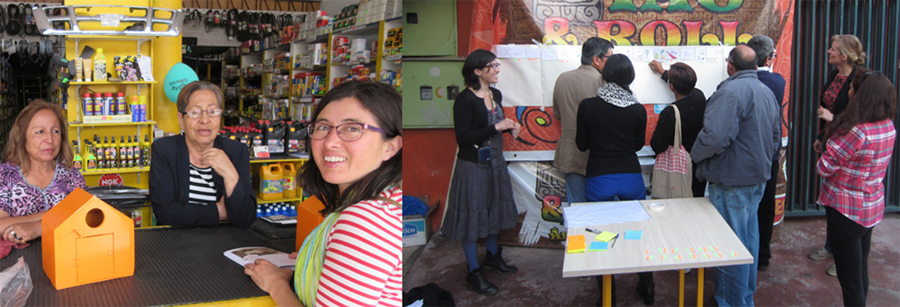
We hebben eerst een normale straat gezocht die vlakbij de conferentie was en hebben vervolgens via workshops, herinneringskastjes en vele gesprekken onderzocht wat in de buurt goed en slecht ging. In Calle Jorge Washington speelden problemen die eigenlijk in heel Quito of misschien zelfs wel voor heel veel grotere steden gelden. Bewoners waren het beu dat zij leefden in de smog van auto’s en bussen, zij misten ruimten om elkaar te ontmoeten of te spelen, ze wilden meer groen, zij wilden een fijnere openbare ruimte en bovenaan het lijstje van wensen stond meer veiligheid. Er is een teaser film gemaakt om het project aan te kondigen.
Met deze wensen in het achterhoofd hebben we een concept gemaakt om de straat tijdelijk en permanent te veranderen en hebben vervolgens binnen de Human Cities Coalition bedrijven gezocht die konden bijdragen aan een oplossing.
– Een straat is afgesloten en hier is een groot plein gemaakt door de straat te beschilderen. De bladeren waren vergrote prints van de oorspronkelijke planten die in deze voormalige tuinstad stonden. Er was veel ruimte voor zitten en door het vele groen ontstond een bijzondere plek in het hart van de stad; spontaan hebben meerdere bands opgetreden. De eerste dag ontweek iedereen het plein, maar aan het eind van de week zaten de banken vol. De gemeente heeft besloten om het plein permanent te maken en is nu in het proces om het beleidsmatig mogelijk te maken.
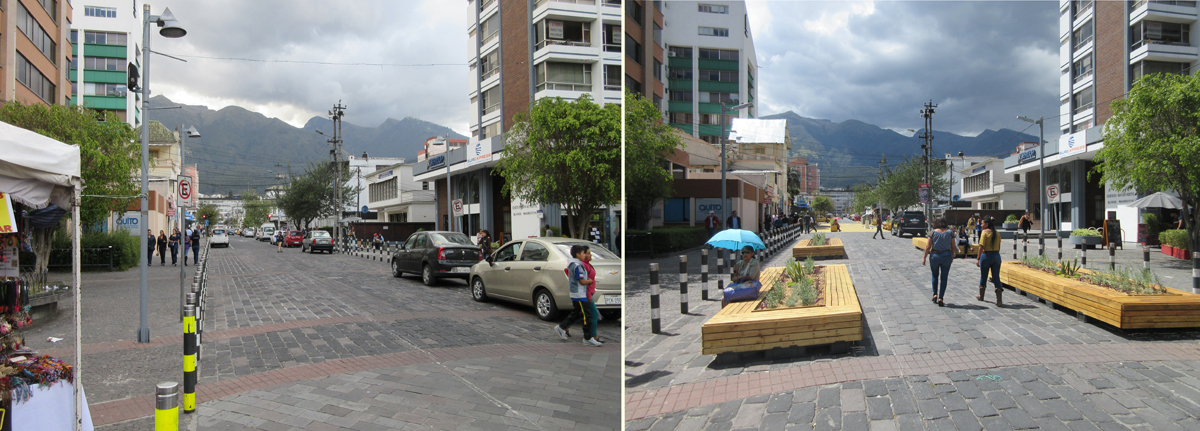
– Meer groen hebben we gemaakt door straten open te maken en ruimte te maken voor bomen en planten. Bijna 200m2 aan bloemen en 30 bomen gaven de straat een totaal ander beeld. Arcadis, KPMG, Alliander en KLM hebben dit mogelijk gemaakt en de lokale staff van de KLM heeft zelf bomen geplant. Onderhoud is een verantwoordelijkheid van de omwonenden in samenwerking met de net opgerichte Urban Farming School cq Buurttuin. De ruimtelijke kwaliteit van de straat is bijvoorbeeld ook verbeterd door een lompe muur van een verticale tuin te voorzien (mogelijk gemaakt door Akzo Nobel Special Chemicals) en schoolkinderen uit te nodigen om deze muur te beschilderen.
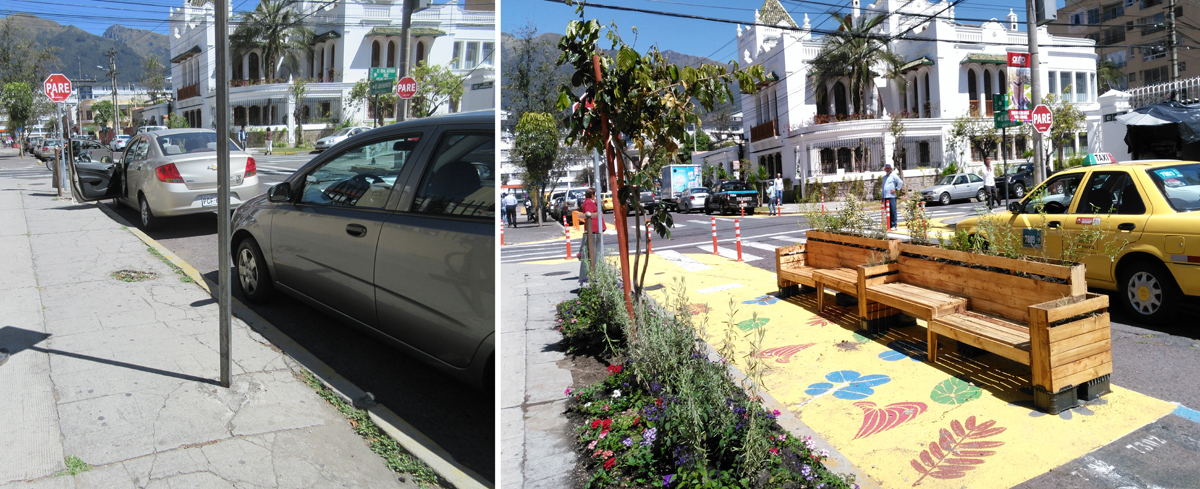
– Nieuwe verblijf- en speelplekken zijn gemaakt. In een “dode hoek” is samen met Stadswerk een speelplek gemaakt voor de buurtkinderen. Verder zijn in de straat een aantal mini-parkjes gemaakt op parkeerplekken. Hier kunnen bewoners relaxen en restaurants hadden extra ruimte voor hun klanten.
Om de veiligheid te verbeteren is bijvoorbeeld de straatverlichting door LED van Philips vervangen zodat de straten minder donker zijn. Het monumentale culturele centrum Benjamin Carrion, de thuisbasis van Fabrica Ciudad, is bijzonder verlicht waardoor bezoekers de plek beter weten te vinden. Ook hebben we meer plekken gemaakt om buiten te zitten zodat het straatleven actiever is en het aantal “ogen op straat” toeneemt.
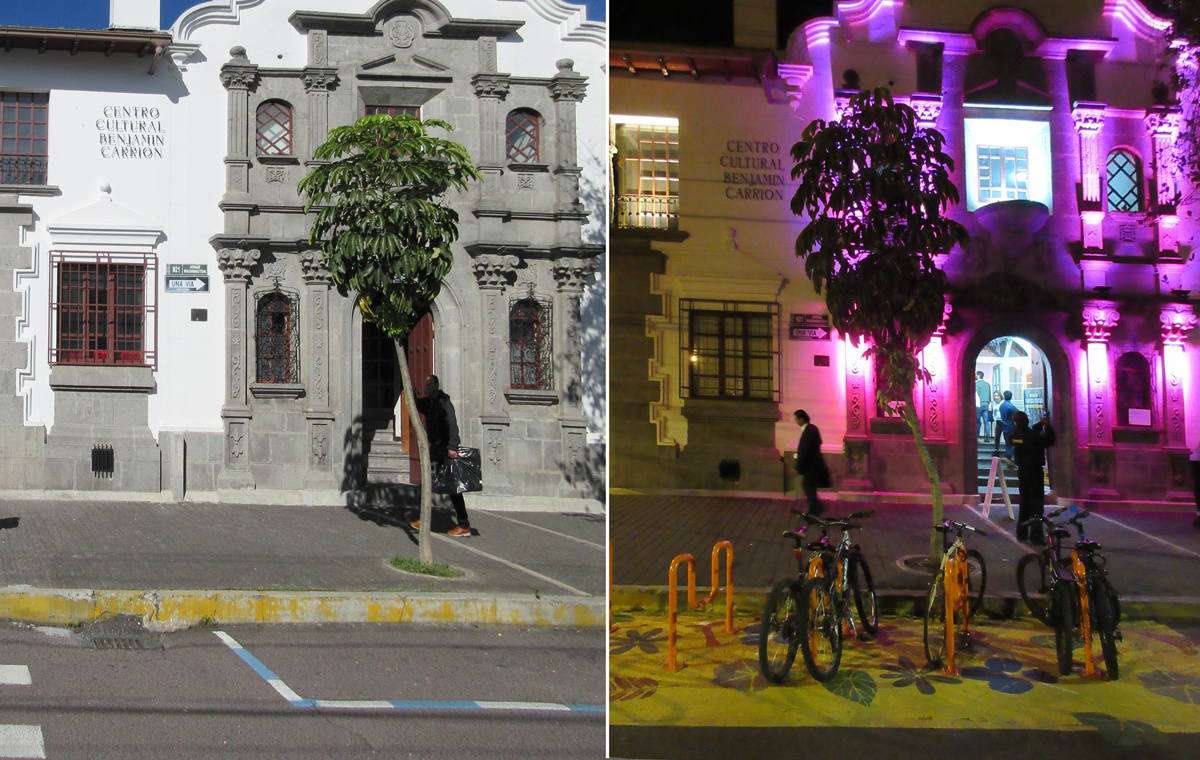
– De verkeersveiligheid is verbeterd. Oversteken was gevaarlijk en wij hebben “olifantsoren” gemaakt om de de bochten minder ruim te maken voor auto’s zodat voetgangers makkelijker konden oversteken. Ook zijn fietsparkeerplekken gemaakt voor Fabrica Ciudad om het fietsen te stimuleren.
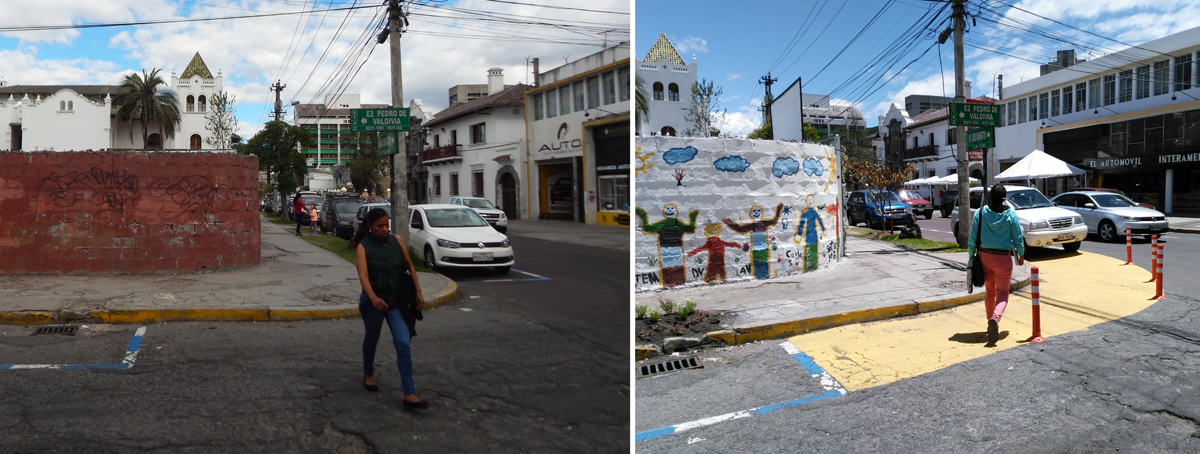
– Veel veranderingen waren misschien niet direct zichtbaar, maar hadden wel een groot effect. Interquimec en Akzo Nobel Deco Painting hebben bijvoorbeeld de graffitti van de muren verwijderd en bijna alle huizen in de straat geverfd. Bijna 100 vrijwilligers zijn eerst opgeleid in hoe zij moeten schilderen en zijn daarna aan de slag gegaan met het schilderen van alle huizen, hekken en stukken straat.

Tijdens de Habitat III week was een uitgebreid programma georganiseerd in de straat om de straat te activeren. Fabrica Ciudad, een stadsambassade van Pakhuis de Zwijger, had een uitgebreid programma waarin lokale en internationale stadsmakers werden verbonden. Verder was er dagelijks muziek, een markt en elke avond werden films vertoond over de stad door Ocho y Medio. Klik hier voor een overzicht van het programma. Het activiteitenprogramma was mogelijk gemaakt door de Nederlandse ambassade in Peru en het Ministerie van Buitenlandse Zaken.
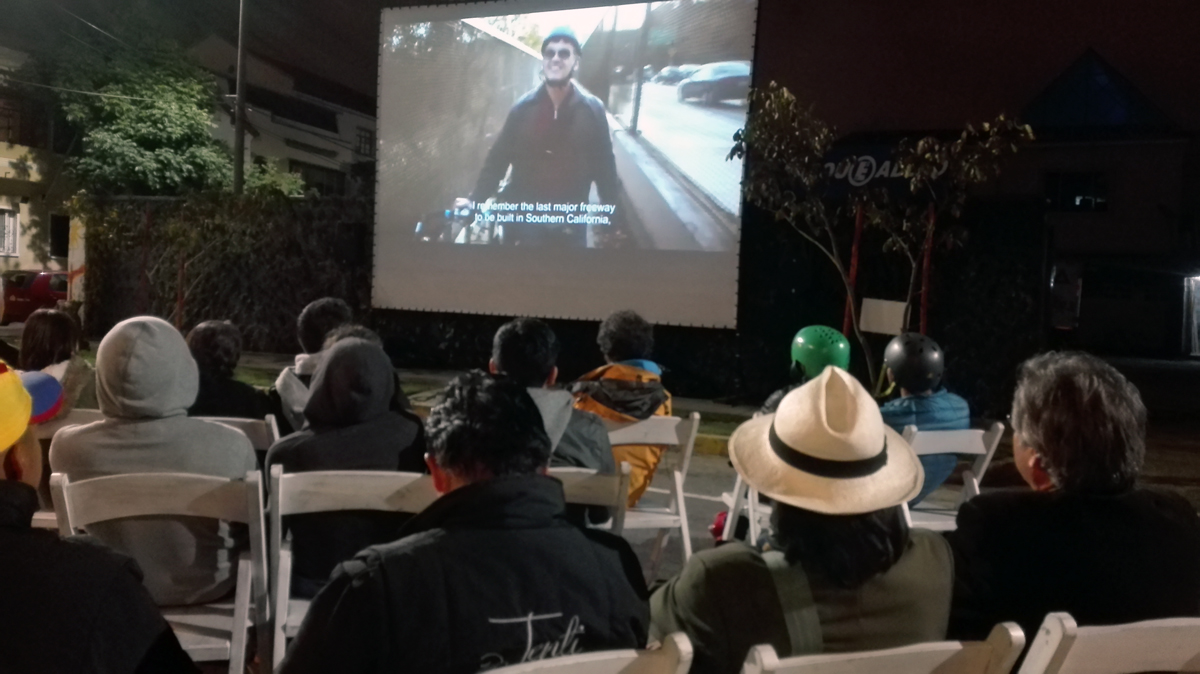
Studenten stedenbouw van de lokale universiteit Pontificia Universidad Catolica de Ecuador (PUCE) hebben meegeholpen aan opzetten van het project, de communicatie met de buurt, het programma van de Fabrica Ciudad en bij het veranderen van de straat.
De opening van de Ruta is groots gevierd met de buurt. Op zondagavond waren bijna 200 buurtbewoners uitgenodigd voor een straatdiner met muziek en natuurlijk toespraken van de officials waaronder Jan van Zanen (burgemeester van Utrecht), André Veneman (directeur duurzaam bij Akzo Nobel), Kees Rade (ambassadeur Sustainable development van het ministerie van Buitenlandse Zaken) en natuurlijk de lokale burgemeester Alfredo Leon. Bij aankomst was iedereen nog schuchter, maar uiteindelijk was het gezelligheid troef.
Resultaat:
– Buurtbewoners geloofden weer meer in hun eigen buurt en zorgen voor bloemen, bomen en nieuwe openbare ruimtes.
– De gemeente kreeg meteen aanvragen van andere bewoners die zelf ook hun buurt willen veranderen, dus het project inspireerde anderen.
– de gemeente dacht over afsluiting van een straat, maar durfde het niet aan. Het experiment heeft laten zien wat de gevolgen zijn en de gemeente gaat de straat nu afsluiten en zorgen voor meer ruimte voor mensen in plaats van auto’s.
– de gemeente wil de aanpak en de ideeën uitrollen naar andere straten en buurten omdat wij hebben laten zien dat de behoefte groot is en met beperkte middelen veel bereikt kan worden.
Er is nog een film van circa 3 minuten gemaakt door Van Vlier Media over het proces en de resultaten.
De overdracht van het plan aan de gemeente en bewoners had natuurlijk nog wat voeten aan de orde. Ook is het vandalisme en criminaliteit groot waardoor bepaalde interventies kapot zijn gemaakt of zijn gestolen.
Meer weten, kijk dan eens op bijvoorbeeld de Citiscope website of op de site van de Human Cities Coalition. Anne-Marie Rakhorst, vice-voorzitter RvT van de Human Cities Coalition, heeft een artikel gepubliceerd over haar belevenissen. Natuurlijk heeft de lokale media ook aandacht besteed, bijvoorbeeld La Hora. In Pakhuis De Zwijger hebben wij een korte presentatie gegeven tijdens een avond over de UN Habitat Labs.
De Human Cities Coalition is gestart met een showcase in Quito en onderneemt nu projecten in Jakarta en Manilla om het leven in sloppenwijken te verbeteren.

New public space in quito
We made up a plan. Conferences take over the city like a grasshopper and the day after the city is empty and citizens hardly know what happened. This shouldn’t be the case and especially not at the UN Habitat II conference that was all about the future of urbanization. We decided not to make an exhibition about our success, but to change a piece of city in reality and show the good and bad experiences. The project was a reason for visitors to stroll around the city and the citizens of Quito understood better what they were talking about behind the high fences of the UN. We also wanted to leave a legacy to the city. The physical legacy was the new designed street. The social legacy was a better social cohesion in the neighbourhood and we opened Fabrica Ciudad; a city embassy of Pakhuis de Zwijger to connect city makers in Quito. Our project was selected for the Habitat Village and part of the official program with visits of Joan Clos and Peter Thompson.
The Ruta de la Experiencia (Experience Route) started by questioning the local citizens and understand their needs. Together with Inge Kok Postma of the Human Cities Coalition, we went four times to Quito to find a location, involve the citizens, make the local administrator enthusiastic, organize the permits and find local contractors and volunteers.

We looked for a regular street to demonstrate that these streets can be improved easily and with a limited budget. We then asked people about their opinion; face-to-face, during a workshop and by making orange “Memory Boxes” in which people could send their memories and ideas. The problems in Calle Jorge Washington were quite common for Quito, but probably for many other cities. The people were fed up with the smog of cars and busses, they missed places to meet and play, they wanted more green and a nicer public space and above all they wanted to feel more safe. Take a look at the teaser movie that was made about the project:
autoplay=”yes” api_params=”” class=””]
With all the wishes and ideas in our mind a concept was made to change the street temporarily and permanent. The members within the Human Cities Coalition were asked to contribute to solve the local issues.
– We closed a street, painted it and suddenly Quito had a new large square in its centre. The benches were a great place to relax and the newly planted flowers and trees gave the square a cosy atmosphere. The yellow paint had prints of the native plants that used to grow in this garden city neighbourhood. People didn’t dare on the first day to walk on the square, but later on in the week it became busy and music groups started to play. The municipality of Quito decided to close the street forever and make the square permanent; the mayor even signed a petition to make this happen.

– Greening the streets excavating all the concrete and plant flowers and trees. More than 200m2 of flower beds and 30 trees were planted by volunteers of airline KLM and with support of Arcadis, Alliander en KPMG. Maintenance is done by the neighbours and the recently opened community garden. The public space is improved by a vertical garden that replaces one of the most ugly walls of Quito (supported by Akzo Nobel Special Chemicals) and painting of school kids.
– New places to meet, relax, play and sport were created along the street. Stadswerk helped to transform a “dead corner” into new playground. Parking lots became new mini-parks and terraces for the restaurants.

– To increase safety all the street lights were replaced by Philips Lightning; dark streets turned bright at night. Philips also illuminated the historic cultural centre Benjamin Carrion, home base of Fabrica Ciudad. And the new public spaces and activities led to more visitors and “eyes on the streets”.

– Crossing streets was unsafe, we made the corners smaller and less wide and made it easier to cross the street.Bike parkings were placed to stimulate cycling.

– Many changes weren’t visible, but had an enormous effect. Interquimec and Akzo Nobel Deco Painting took away graffiti and painted most of the houses along the street. Nearly 100 volunteers got a training for painting and used their newly skills to paint walls, houses and streets.

During the Habitat week many activities took place in the Ruta de la Experienica and inside Fabrica Ciudad. Fabrica Ciudad, a city embassy of Pakhuis de Zwijger, connected city makers locally and from all over the world. Urban movies were screened each night by Ocho y Medio, bands were performing every evening and at a market local food and drinks were sold. Click here to view the program. The activities were supported by the Dutch Embassy of Ecuador, Peru and Bolivia and the Ministry of Foreign Affairs.

– Students of the university Pontificia Universidad Catolica de Ecuador (PUCE) helped during the project and with the program of Fabrica Ciudad.
The opening of the Ruta de la Experiencia was a typical Dutch Street dinner. Almost 200 people joined the event, ate along long tables, enjoyed the music and speeches of the officials such as Jan van Zanen (Mayor of Utrecht), André Veneman (director sustainability Akzo Nobel), Kees Rade (ambassador Sustainable development at Ministry of Foreign Affairs) and the local administrator Alfredo Leon. People were shy at the beginning of the event, but at the end they were dancing.
Result:
– the neighbours believe again in their own neighbourhood and take care of the public space.
– people were inspired by the opportunities; other neighbourhoods have asked the municipality if they could do the same.
– the municipality was studying the possibility to close the street. Our project was the experiment and showed that it can be done.
– the municipality would like to continue the project in different areas, because we have shown that with limited resources large changes are possible.
Van Vlier Media made a 3 minute movie about the project and process and Human Cities Coalition.
The project was handed over to the local administrator and citizens. We hope the project continues and that people stay involved, but some things are already broken or stolen in the first weeks.
More informatiom? Take a look at Citiscope or Human Cities Coalition. Anne-Marie Rakhorst, vice-president of the advisory board of Human Cities Coalition wrote an article and also the local newspapers gave updates.
The Human Cities Coalition started in Quito with this showcase and continues in Jakarta and Manilla to improve life in slums.

Conferencias internacionales como la de Habitat inundan las ciudades donde son realizadas con información y actividades de la cuales el ciudadano común no tiene ni idea, para dejarlas vacías el día siguiente. Nuestro plan era crear un proyecto que cambiara realmente un área de Quito para de esta manera, dejar un legado después de que el show se fuera de la ciudad. Sobre todo, en una conferencia donde se está hablando sobre el futuro de las ciudades y de sus ciudadanos. Entonces decidimos, a cambio de la presentación estándar sobre ciudades humanas en una sala de exposiciones, un proyecto real en la ciudad de todos los días para los Quiteños. De esta manera, sacamos a los visitantes de la conferencia fuera del centro del evento y conectamos a los Quiteños con lo que se habla a puerta cerrada en la conferencia. El legado para la ciudad es físico (las intervenciones en el espacio público) y social al facilitar encuentros entre vecinos y formar una red de ‘hacedores de ciudad’ al instalar Fabrica Ciudad; una embajada del Pakhuis de Zwijger. Este plan se presentó para la convocatoria del Habitat Village y fué seleccionado e incluido en el programa oficial, desde donde nos visitaron importates figuras en las Naciones Unidas como Joan Clos y Peter Thomson.
El punto de inicio de la Ruta de la Experiencia son las necesidades de la comunidad. Junto con Inge Kok Postma del Human Cities Coalition visitamos en varias oportunidades Quito para seleccionar el área de intervención, conversar con la comunidad y vincularlos al proyecto, entusiasmar al municipio, y encontrar empresas que nos apoyaran en la realización. 
Seleccionamos una calle genérica en la vecindad del área de la conferencia, y alli a través de consultas, talleres, buzones de correo y muchas conversaciones investigamos lo que se percibía como positivo y negativo sobre el barrio . En el segmento de la calle Jorge Washington seleccionado se perciben como problemas tal vez los mismos que en todo Quito y en muchos otras grandes ciudades. La comunidad está cansada de vivir entre el smog de automóviles y buses, necesitan espacio para descansar, encontrarse y jugar en la calle, piden mas áreas verdes y tienen como prioridades número uno la mejora de la seguridad. Con el siguiente corto se presentó el proyecto.
Con estos deseos y necesidades en mente, diseñamos un concepto para transformar permanentemente la calle para pasar a buscar, dentro del Human Cities Coalition empresas que pudieran aportar a este concepto.
– Una calle es peatonalizada usando pintura. Las impresiones en el piso son inspiradas en hojas de especies nativas del área de Quito, recordando que este barrio fué diseñado como una ciudad jardín. Se crearon espacios para sentarse y áreas verdes que juntos formaron un espacio agradable para el peatón donde se presentaron bandas de música. El primer día, nadie caminó por la calle cerrada, usaron las aceras como todos los días. En el transcurso de la semana notamos como peatones y ciclista poco a poco se apropiaban del espacio y las bancas se llenaban de gente descansando, conversando o mirando a otros pasar. El municipio estudia en este momento la posibilidad de crear una plaza permanente en este lugar.

– Se crearon mas áreas verdes abriendo aceras que volvieron a ser permeables y plantando árboles, flores y especias que inmediatamente atrajeron abejas. Alrededor de 200 m2 de áreas verdes y 20 nuevos árboles de guava y pomarrosa (nativos de Quito) cambiaron el aspecto de la calle. Arcadis, KPMG, Alliander y KLM hicieron esto posible. Los empleados de KLM sembraron los árboles ellos mismos bajo la coordinación de Pedro Kingman, quién seleccionó las especies y coordina el vivero y la escuela en agricultura urbana en la misma calle. La calidad espacial ganó mucho al convertir una muro ciego y grafiteado en un jardín vertical (hecho posible por Akzo Nobel Special Chemicals) e invitar a jóvenes de la escuela en la misma calle a pintar el otro segmento del muro.

– Se crearon nuevas áreas para descansar y jugar. En una esquina oscura y olvidada, junto con Stadswerk se realizó un espacio de juego para los niños de la vecindad. Espacios para parqueadero de automóviles se conviertieron en mini-plazas para la comunidad y los clientes de tiendas y restaurantes en el vecindario.
Para mejorar la seguridad, Philips lighting reemplazó todas las luminarias de la calle por LED lo que mejoró la iluminación y visibilidad de la calle. El edificio monumental del centro cultural Benjamín Carrión, que funcionó como base de la Fabrica Ciudad fue iluminado para resaltar su fachada que antes era completamente oscura en la noche. Frente a este centro se localizaron parqueaderos de bicicletas y áreas para sentarse. El crear áreas para sentarse aumenta la seguridad pues se traen mas ojos a la calle.

– La seguridad vial también se mejoro al pacificar las calles disminuyendo la distancia de cruce para los peatones lo cual a su vez disminuye la velocidad de los automóviles al cruzar la esquina y al doblar.

– Aunque algunas transformaciones son menos visibles, también tienen un efecto considerable. Interquimec y Akzo Nobel Deco Painting pintaron todos los muros que habían sido vandalizados con graffiti y la mayoría de edificios a lo largo de la calle. Esto se hizo con el apoyo de alrededor de 80 voluntarios, que primero recibieron entrenamiento en pintura.

Además de las transformaciones físicas, la activación del espacio público es igual de importante. Durante Habitat III se organizó un programa en la calle que incluía música en vivo y cine al aire libre a cargo de Ocho y Medio. Fabrica Ciudad, una embajada del Pakhuis de Zwijger, desarrollo una programación en la cual se conectaron hacedores de ciudad local y conferencistas internacionales a través de conversaciones y debates públicos. En este vínculo puede consultar la programación. Estas actividades fueron posibles gracias a la Embajada de los Países Bajos en Perú y el Ministerio de Relaciones Exteriores.

Estudiantes de arquittectura de la Pontificia Universidad Catolica de Ecuador (PUCE) colaboraron durante todo el proceso del proyecto, desde la comunicación con la comunidad, la programación y el blog de Fabrica Ciudad, y la realización de las transformaciones físicas en la calle.
La inauguración de la Ruta fué una gran celebración la noche del domingo, en la cual alrededor de 150 vecinos cenaron y disfrutaron música en la calle en compañia de invitados internacionales y de la delegación holandesa a Habitat III. Para la inaguraciónde la ruta, Jan van Zanen (alcalde de Utrecht), André Veneman (director de sostenibilidad de Akzo Nobel), Kees Rade (Embajador de desarrollo sostenible del Ministerio de Relaciones Exteriores) y el administrador Zonal de la Mariscal Alfredo Leon dirigieron unas palabras a los asistentes para después pasar a una agradable velada con música, comida y bebidas.
Resultados:
– Un aumento en al compromiso de los vecinos con su vecindario quienes se comprometieron a colaborar en el mantenimiento de las flores, plantas, árboles y nuevos espacios públicos.
– El municipio recibió propuestas de ciudadanos que quieren hacer proyectos similares en otras áreas de la ciudad.
– Le cierre del segmento de Calle Jorge Washington para automóviles era un plan del municipio que a través de su concretización en la semana de Habitat en nuestro proyecto puede volverse una transformación definitiva devolviendo un espacio a los peatones y ciclistas de Quito.
– El municipio desea usar esta aproximación de transformación con escasos medios en otras áreas de la ciudad al ver el efecto positivo que la Ruta ha tenido en la comunidad.
Van Vlier Media realizó un video de alrededor 3 minutos mostrando el proceso y resultados del proyecto.
También tenemos lecciones aprendidas de este proceso para proyectos futuros. Por ejemplo, debimos haber puesto mas atención al proceso de traspaso del proyecto a la comunidad. También tenemos noticias de vandalismo y criminalidad en las intervenciones físicas.
Si quiere saber mas sobre el proyecto, puede leer sobre el proyecto en Citiscope o en el sitio del Human Cities Coalition. Anne-Marie Rakhorst, vice presidente de la mesa directiva del Human Cities Coalition, escribió sobre sus experiencias visitando el proyecto. También en los medios locales se publicaron historias, por ejemplo en La Hora.
El Human Cities Coalition ha iniciado con dos proyectos de gran escala en áreas de vivienda informales en Yakarta en Manilla.


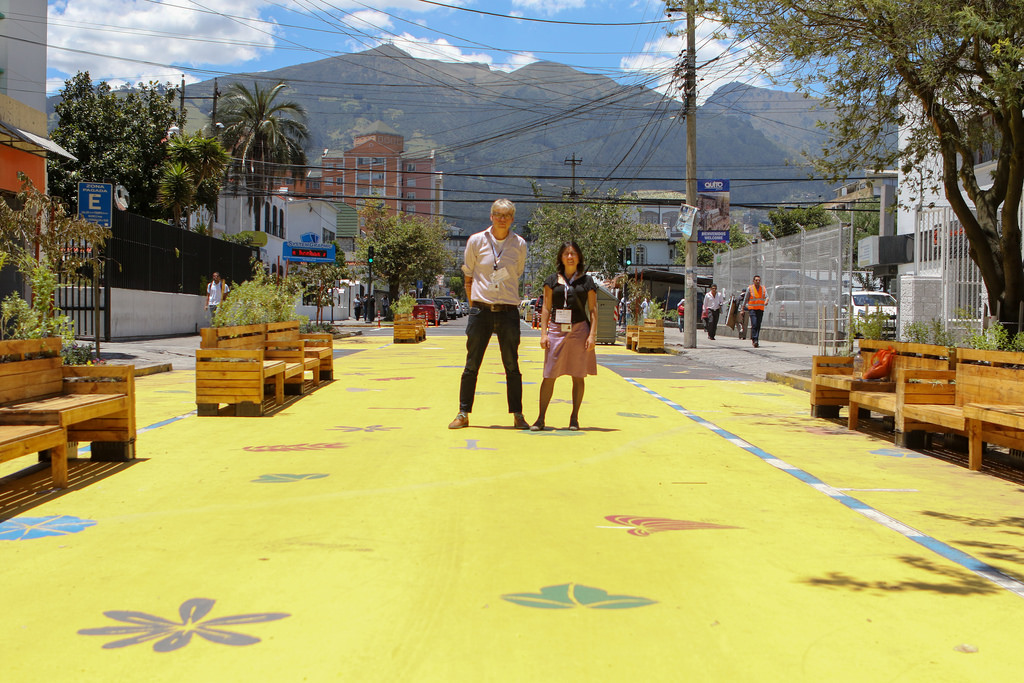
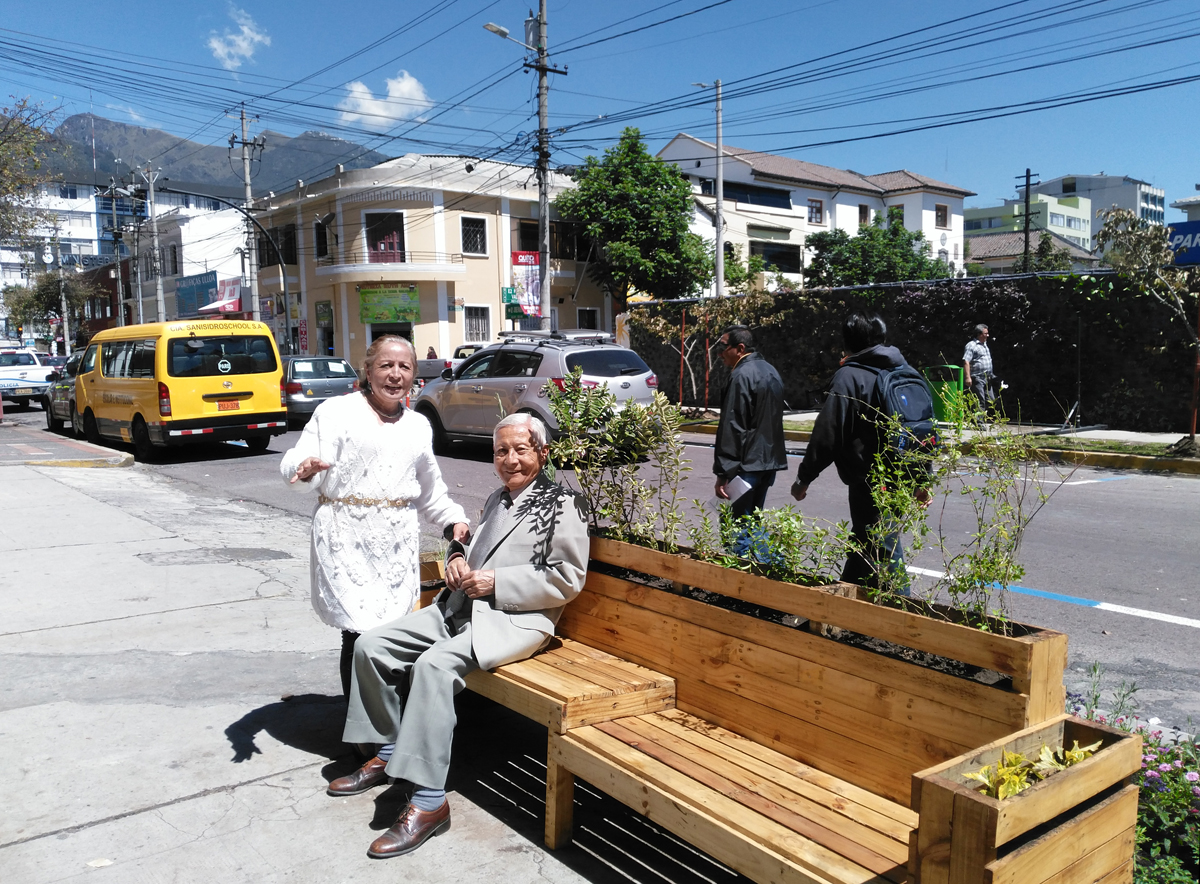
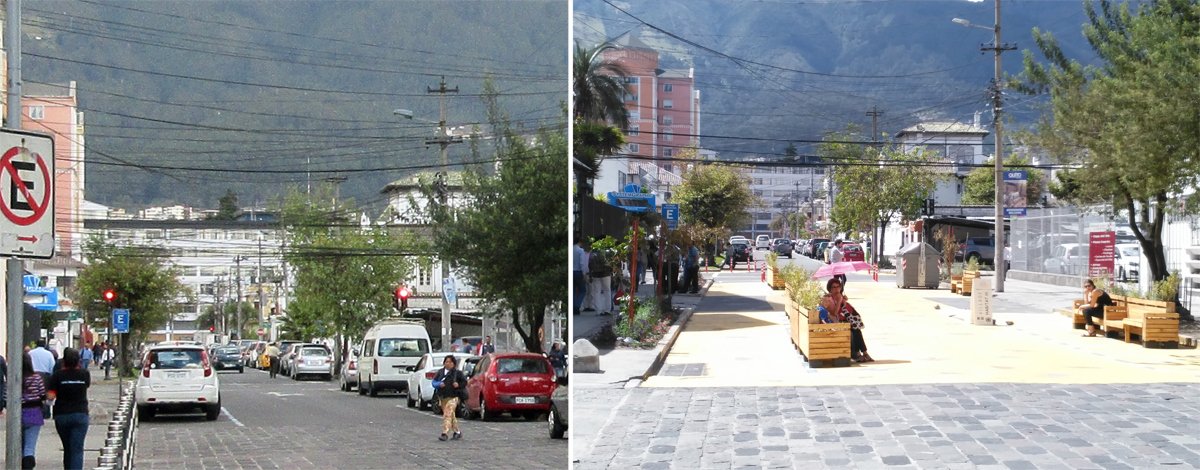
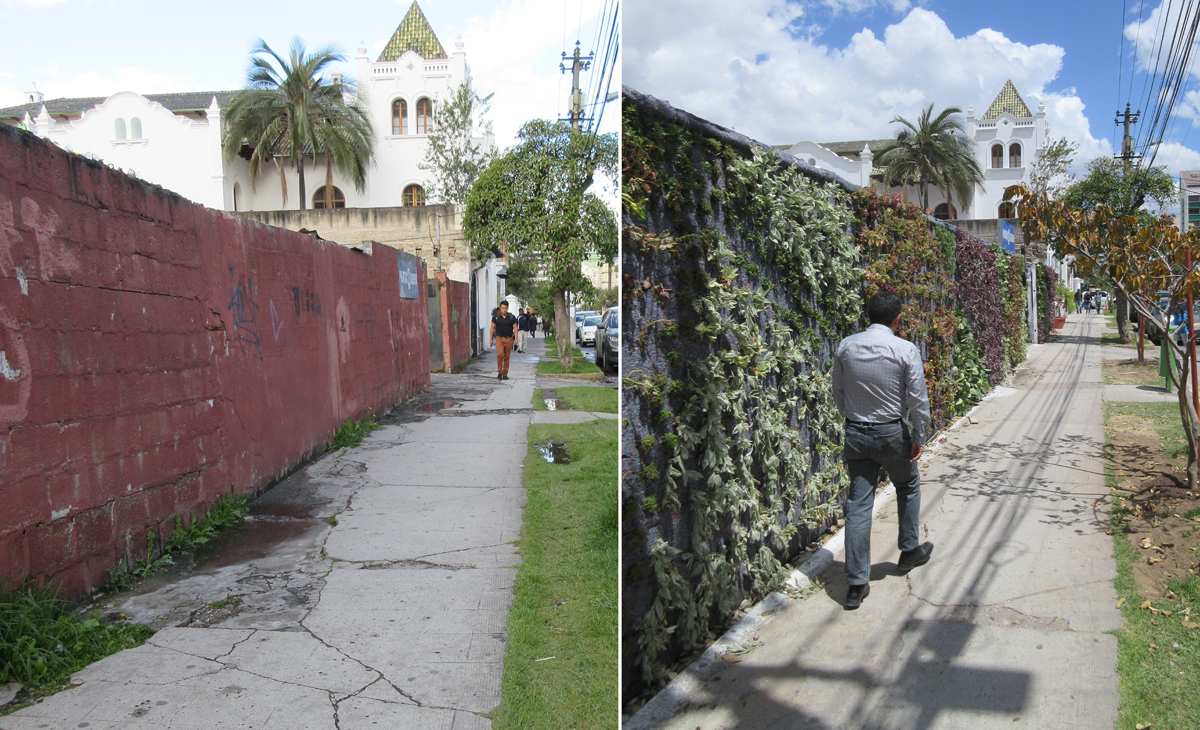
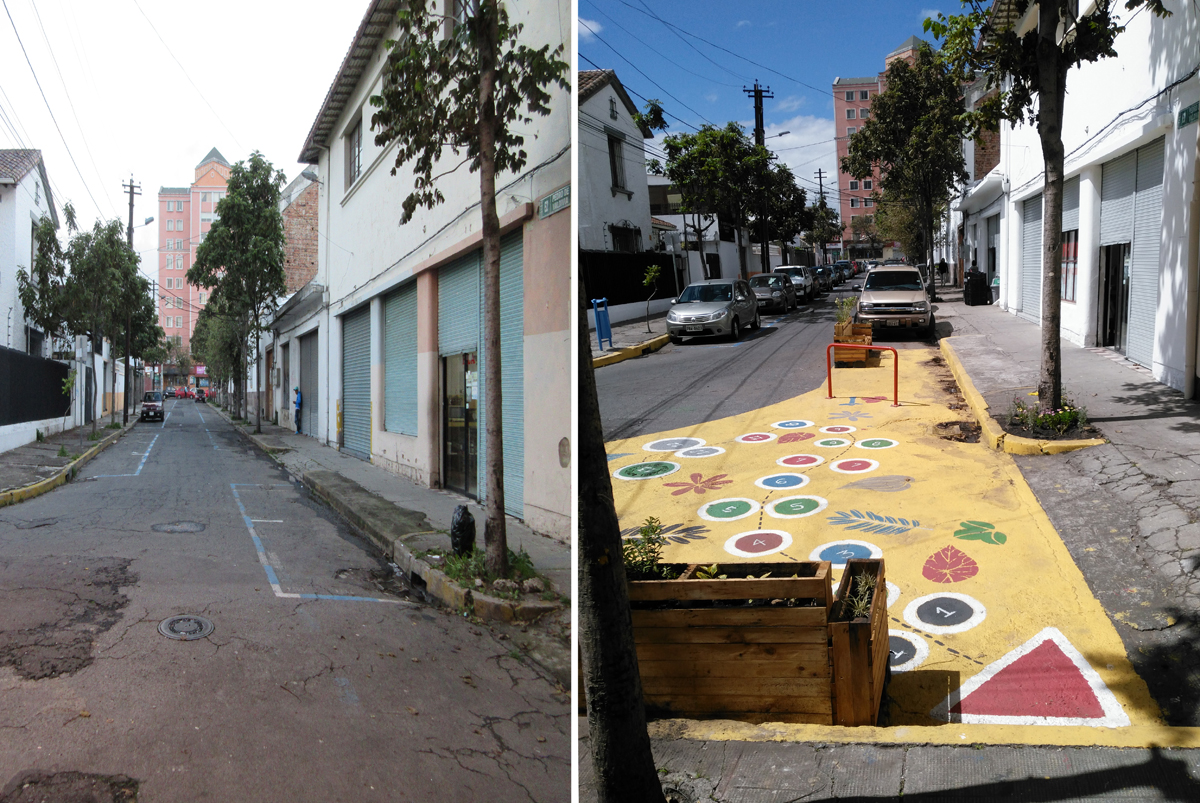
![[:nl]Buurtaanpak Rivierenwijk en Transwijk[:]](https://www.urbanos.nl/wp-content/uploads/buurtaanpak-utrecht-vergroenen-500x383.jpg)
![[:nl]Plein om te ontmoeten voor de Zeeheldenbuurt[:]](https://www.urbanos.nl/wp-content/uploads/plattegrond-leiden-500x383.jpg)
![[:nl]Anders Werken[:]](https://www.urbanos.nl/wp-content/uploads/anderswerken-500x383.jpg)
![[:nl]Inclusieve Stad[:en]Inclusive City[:]](https://www.urbanos.nl/wp-content/uploads/URBANOS-inclusieve-stad-1-500x383.jpg)
![[:nl]Urban mining in de regio[:]](https://www.urbanos.nl/wp-content/uploads/URBANOS-spaanse-polder-3Dvoor-web-500x383.jpg)